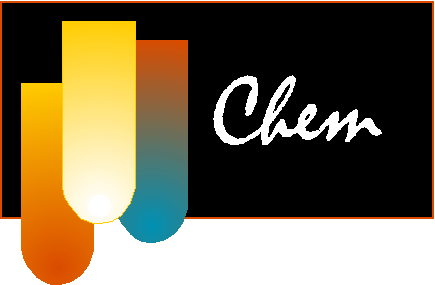
Investigation #26:
 | Investigation #26:
|
The study of metal complexes has gained a lot of attention lately because of the realization of its importance in biological aspects. One example is hemoglobin which is a Fe complex. Much like the cobalt complex in this lab, it combines with oxygen. When it does so, it is a red color. When it supplies its oxygen atom to your muscles it changes back to a blue color. That is why blood coming from your lungs is red and is considered to be in your arteries on the way to your muscles. Blood that has delivered the oxygen and on its way back to the heart and lungs is blue and is said to be in your veins. In this lab you will look for color changes in the cobalt complex just like those in the hemoglobin.
This lab will involve different methods of product preparation to include: heating, filtering, and crystal formation.
Concepts of the Experiment
The following balanced equations are important in determining amounts and yields of products and reactants.
step 1: 2CoCl2.6H2O + 4C4H8N2O2 ® 2CoH14C8N4O4 + 4HCl +12H2O
step 2: 2CoH14C8N4O4 + 4HCl + 4C5H5N + 1/2 O2® 2CoH19C13N5O4Cl + 2C5H6NCl + H2O
overall reaction:
2CoCl2.6H2O + 4C4H8N2O2 + 4C5H5N + 1/2 O2® 2CoH19C13N5O4Cl + 2C5H6NCl + 13H2O
FW of cobalt complex:
Co 58.9332g
H 1.00794*19=19.15086 g
C 12.011*13=156.143 g
N 5*14.0067=70.0335 g
O 4*15.9994=63.9976 g
Cl 35.4527g
CoH19C13N5O4Cl = 403.71086
g/mole
FW of CoCl2.6H2O
Co 58.9332 g
Cl 35.4527*2=70.854 g
H 1.00794*12=12.09528 g
O 6*15.9994=95.9964 g
CoCl2.6H2O =
237.87888 g/mole
FW of C4H8N2O2
H 1.00794*8=8.06352 g
C 12.011*4=48.044 g
N 2*14.0067=28.0134 g
O 2*15.9994=31.9988 g
C4H8N2O2 = 116.11972 g/mole
Example Calculation: Calculate the mass of CoCl2.6H2O required for the preparation of 0.70 g of the complex. Assume a 60 percent yield in this experiment and consider CoCl2.6H2O to be the limiting reactant.
0.70 g CoH19C13N5O4Cl = ? g * 0.60 (60 percent of the total theoretical amount is 0.70g)
? g = 1.167 g CoH19C13N5O4Cl
1.167 g CoH19C13N5O4Cl * 1 mole/403.71086g * 2 moles/2 moles * 237.87888 g/mole =
0.687 g CoCl2.6H2O (now using stoichiometric calculations we can find the CoCl2.6H2O mass)
Example Calculation: The mass of CoCl2.6H2O calculated above should be reacted with 110% of the stoichiometrically required amount of dimethylgyoxime. How many grams of dimethylglyoxime are needed?
0.687 g CoCl2.6H2O * 1 mole/ 237.87888 g * 4 moles/ 2 moles * 1.10 * 116.11972 g/mole = 0.738 g C4H8N2O2
The rest of the calculations, I will leave to y'all. Good luck.